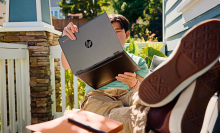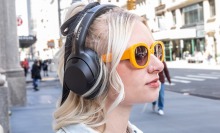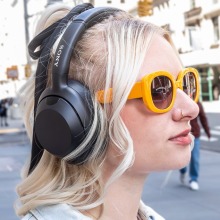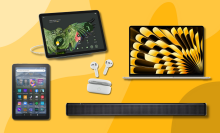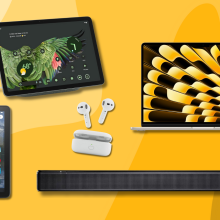Technology has changed a lot since you were small. Your kids have probably mastered the features on your iPhone better than you have. So it's fine to admit it: It'd be kinda sweet if they had something of their own so that your phone wasn't perpetually doused in mystery slime. But too many restrictions or a hard "no" to devices at all could do more harm than good.
With the right balance of screen time, parental controls, and learning content versus just for fun content, a tablet could go much further for your kid than keeping them occupied during a long car ride. (But also, sorry, kid-less people on Twitter who vow to never give their future kid a tablet — we can't hear you over the sound of our uninterrupted Zoom meeting.)
The latest on screen time recommendations for kids
Screen time — a big component of the ever-evolving mastery of internet safety for kids — is an increasingly popular point of study, especially after 2020 made it a prominent hurdle in households across the globe. Parents' questions often boil down to "how much is too much?" Though this is rarely met with a definitive answer, recent research can at least shine a light on some best practices.
In April 2019, the World Health Organization issued much-anticipated guidelines around screen time for preschool-aged kids: One hour a day is the recommended maximum for children between two and five. This lines up with recent research done at Vanderbilt University that suggests toddlers probably won't learn much from a screen, anyway.
But that learning disconnect often fades by age three. Just as they're mastering talking, kids are also grasping that the character on the screen represents a real person — and that that person is teaching them something.
The impacts of being online as an adolescent
There is even less official screen time guidance for adolescents when video games, texting, and social media are thrown into the mix. But one prominent area of interest regarding older kids is being online as socialization.
Your kid who constantly wants to FaceTime a friend or squad up on multiplayer Fortnite might be onto something: A 2021 analysis by researchers at The University of Colorado Boulder uncovered some revealing relationships between social screen time and stronger peer relationships for kids between 9 and 10. When not relied on as the only means of bonding, they can be legitimate socialization tools.
This is comforting news for anyone holding the antiquated "gaming turns kids into zombies" mindset. However, it certainly doesn't relieve the hard need for monitoring social media usage, especially among teens. The American Psychological Association's (APA) guidelines for adolescents on social media received an update in May 2023 that largely revolved around mental health, particularly stressing the minimization of access to harmful or hateful content as well as misinformation. While the APA notes that social media isn't inherently good or bad, the experience can be cushioned through solid social media literacy skills.
Some social media platforms like TikTok are taking parental filters upon themselves to provide precautions more specific to the app than generalized software can provide.
Can kids learn from a tablet?
One project by the Joan Ganz Cooney Center (a non-profit run by the people behind Sesame Street) compared literary assessments of kindergarten through third-grade students who had used tablets at school. The students who used tablets saw higher test scores than those who didn't use tablets, and they were able to recognize 20% more vocabulary words due to an improved ability to recognize sounds and represent sounds as letters. A 2018 meta-analysis published in the Frontiers in Psychology journal found that the touchscreen learning effect was particularly beneficial for STEM through the memorable real-life experiments that physical swiping can mimic.
Can we blame them? Interacting with content makes for a richer and more memorable experience. It just feels more like playing, and it's not surprising that kids may be more willing to learn when it doesn't feel forced. Besides, playing and imagination are the building blocks for creativity and empathy — so playing Toca Boca instead of doing multiplication is still building real-world skills.
Dr. Michael Levine, founder of the Cooney Center, stands by the idea that there is a difference between "learning time" and "mindless time: "Instead of pushing screens away, it’s time to put them to use in a thoroughly modern way."
So yes, tablets are a great learning tool as long as they're not a kid's main source of learning. Kids will always need to be comfortable reading print books and doing math by hand. No arguing there. But tablets provide some real opportunities for self-sufficient, interactive learning that kids will definitely utilize in the future of education revolving around laptops.
How to choose the right tablet for your kid
Most tablets made specifically for kids will already be equipped with built-in parent accounts, timers, and pre-selected websites or apps that fall under appropriate age groups. Easy enough.
General-purpose tablets aren't a bad choice at all — many sites name the iPad as one of the best tablets for kids even though it's technically for everyone. You'll just need to get creative to build a similar safety net similar to those ones that come built-in on a just-for-kids tablet.
If your household already has an iPad or Fire tablet, you can see how your kid would do with a tablet of their own by trying a tablet add-on like Osmo.
Here are the best tablets to get for your kids in 2023:






















